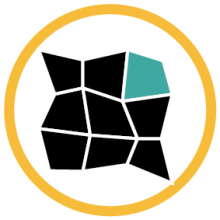Flexible Quad-Surfaces for Transformable Design

Transformable structures are becoming increasingly popular in engineering, architecture and art. A particular class is formed by flexible quad-surfaces: quadrilateral plates connected by rotational joints, typically in the combinatorics of the square grid. While a generic quad-surface is rigid, flexible ones move with one degree of freedom, allowing for an exact motion control. A showcase application of a flexible quad-surface is the Miura-ori design of solar panels. However, industrial and artistic applications of flexible quad-surfaces remain very restricted so far due to the absence of both a theoretical basis and design tools.
Our goal is to expand the solution space of flexible quad-surfaces. Theoretical groundwork for this development is the complete classification of flexible (3×3)-quad complexes recently obtained by the PI and the algebraic approach developed by the involved researcher. The following tasks should be accomplished:
Concretize the available rather abstract classification in order to make it accessible to the development of computational design tools. Lay a theoretical basis for the study of the spatial motion of a quad-surface. Create test implementations of shape exploration tools for architectural applications.
Investigate how flexible 3×3 complexes can be fitted together. Study stitching of complexes of different types in order to combine their individual motion characters in a single piece of a flexible quad-surface.
Further expand the solution space by considering skew quadrilaterals, which can be implemented as structures with panels of negative curvature, e.g., ruled quadric patches.
As long-term goals, we plan to study flexible surfaces of different topology (tube-like structures etc.) and different combinatorics (rhombitrihexagonal tiling etc.).




